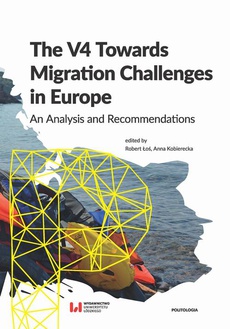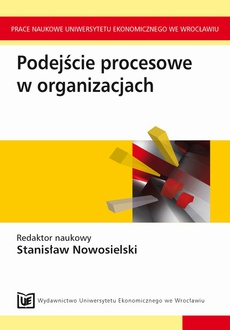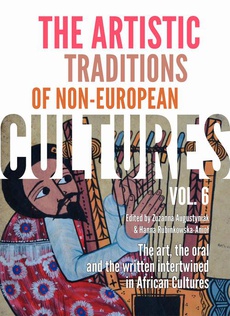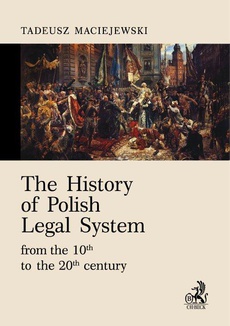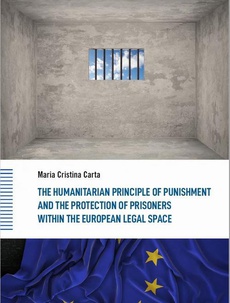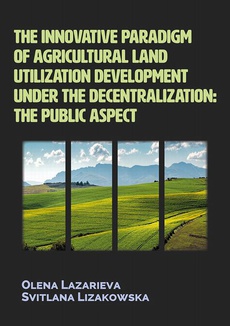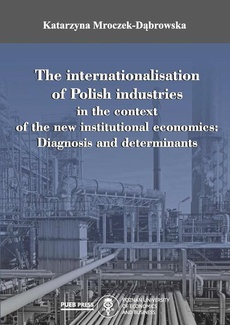POLECAMY
The V4 Towards Migration Challenges in Europe
An Analysis and Recommendations
Redakcja:
Wydawca:
Format:
ibuk
The culmination of the large-scale influx of migrants in the European area in 2015 and 2016 has not only led to severe pressure on the affected countries - transit countries as well as countries of destination - but also to the questioning of fundamental achievements of the European Union such as the freedom of movement. The migrant crisis also shed light on pressing issues still in need of satisfying responses reflecting reality, such as the case of the revision of the 1951 Geneva Convention on the status of refugees and the Dublin Ili Regulation setting forth that an asylum application needs to be filed in the first country of entry. Not only did the crisis reveal already existing ruptures between Western and Eastern Europe, but it also showed that the European Union as such is incapable of taking firm and swift decisions regarding the protection of its own borders and citizens against an unprecedented influx of irregular migrants - many of them without official documents. Czech Republic, Hungary, Poland and Slovakia are all sceptical towards the idea of positivist humanitarian approach towards migrations and introducing limits on accepting refugees for each EU state. Such reluctance derives from many different aspects, from political and geopolitical to social and cultural. Does V4 region is in fact threatened by migration crisis? lt is evident, that Hungary being the transit state can face significant threats. However, none of those states have the status of settlement countries or long-standing destinations.
| Rok wydania | 2017 |
|---|---|
| Liczba stron | 238 |
| Kategoria | Publikacje darmowe |
| Wydawca | Wydawnictwo Uniwersytetu Łódzkiego |
| ISBN-13 | 978-83-8088-848-7 |
| Numer wydania | 1 |
| Język publikacji | angielski |
| Informacja o sprzedawcy | ePWN sp. z o.o. |
Ciekawe propozycje
Spis treści
| Introduction (Anna Kobierecka, Martin Riegl) | 9 |
| Chapter 1. Migration as a Political and Public Phenomenon: The Case of Czech Republic (Jan Bečka, Bohumil Doboš, Filip Gantner, Jakub Landovský, Lenka Pítrová, Martin Riegl, Scarlett Waitzmanová) | 29 |
| 1.1. Introduction: Scene-setter | 30 |
| 1.2. The Czech Asylum and Migration Policies within the EU Framework | 32 |
| 1.2.1. The EU Asylum Policy Framework | 32 |
| 1.2.2. The Refugee Legal Framework in the Czech Republic | 34 |
| 1.2.3. A Closer Look into the Rights and Duties of the Asylum Seekers and Seekers of International Protection | 38 |
| 1.2.4. Conclusions: Reaction to the Migration Crisis and Its Reflection in the Legislation | 39 |
| 1.2.5. The Enhancement of the Procedure Leading to the Decision on Granting the Asylum and for the Judicial Review | 42 |
| 1.2.6. The Relocation of Refugees | 43 |
| 1.2.7. The Issue of Detentions | 43 |
| 1.2.8. Additional Crisis Management Measure | 44 |
| 1.2.9. Current Legal Problems and the Possible Way Ahead | 45 |
| 1.3. Integration Policies and Programmes of the Czech Government – Key Documents and Responsible Institutions | 45 |
| 1.3.1. The Basic Principles of the Czech Migration and Integration Policy | 46 |
| 1.3.2. The Humanitarian and Development Aid in the Migration Context | 50 |
| 1.4. The Perception of Migrants/Refugees in the Czech Republic and the Impact of the Migration Crisis on the Czech Political Scene | 51 |
| 1.4.1. The Perception of Migrants/Refugees among the General Public in the Czech Republic | 52 |
| 1.4.2. Migration as a Topic of the General Political Discourse in the Czech Republic | 54 |
| 1.5. The Czech Republic and the Reactions to the Migration Crisis on the International Scene | 58 |
| 1.5.1. The Visegrad Group (V4), the Czech Presidency and Its Activities on the EU Level | 59 |
| 1.5.2. The Alternative V4 Plan (“Plan B”) | 72 |
| 1.5.3. The Regional Outreach – CEDC, the Salzburg Forum and Their Significance | 75 |
| 1.5.4. The Practical Assistance Provided by the Czech Ministry of Defence (MoD) and the Czech Army to Deal with the Migration Crisis (as of 31 December 2016) | 77 |
| 1.5.5. The Contribution of the Ministry of Interior of the Czech Republic and the Czech Police in Dealing with Migration Crisis | 78 |
| 1.6. Conclusion | 80 |
| Chapter 2. Migration as a Political and Public Phenomenon: The Case of Hungary (Sándor Gallai, Dániel Horváth, Hanga Horváth-Sántha) | 83 |
| 2.1. Introduction | 84 |
| 2.2. Migration Policy | 91 |
| 2.2.1. The EU Asylum Policy Framework | 91 |
| 2.2.1.1. Asylum Outlook | 91 |
| 2.2.1.2. Aliens Policing Outlook | 95 |
| 2.2.1.3. Citizenship and National Policy Outlook | 97 |
| 2.2.2. Institutional Framework: Main Stakeholders and Reception Facilities | 98 |
| 2.2.3. Other Policies | 101 |
| 2.2.4. Social Integration of Migrants and Refugees | 106 |
| 2.2.4.1. Labour Market Integration of Migrants in Hungary | 108 |
| 2.2.4.2. Migrant and State Strategies towards Integration | 110 |
| 2.2.4.3. The Hungarian Law on Asylum | 111 |
| 2.2.4.4. Social Integration of Refugees and Persons Entitled to International Protection in Practice | 113 |
| 2.3. Public Attitude | 113 |
| 2.4. Political Implications | 118 |
| 2.4.1. The Evolution of the Party System | 118 |
| 2.4.2. Party Positions on Immigration | 123 |
| 2.4.2.1. Fidesz | 124 |
| 2.4.2.2. Jobbik | 130 |
| 2.4.2.3. Hungarian Socialist Party (MSZP) | 133 |
| 2.4.2.4. Other Parliamentary Parties | 136 |
| 2.4.3. The Quota Referendum | 140 |
| 2.4.4. The Dynamics of Party Contest in the Area of Migration | 144 |
| 2.5. Conclusions | 147 |
| Chapter 3. Migration as a Political and Public Phenomenon: The Case of Poland (Anna Kobierecka, Michał Kobierecki, Robert Łoś, Michał Rulski) | 149 |
| 3.1. Introduction | 150 |
| 3.2. Migration Policy in Poland | 152 |
| 3.2.1. Legal Framework | 152 |
| 3.2.2. Institutional Framework | 156 |
| 3.2.2.1. The Ministry of the Interior and Administration | 156 |
| 3.2.2.2. The Ministry of Family, Labour and Social Policy | 157 |
| 3.2.3. Other Polish Policies Addressing Migration | 157 |
| 3.2.4. Social Integration | 158 |
| 3.2.4.1. The Legal Framework of the Polish Integration System | 159 |
| 3.2.4.2. Shortcomings of Polish Integration Policy | 164 |
| 3.3. Public Attitude | 165 |
| 3.4. Political Implitacions | 173 |
| 3.4.1. Polish Political Parties before the 2015 Elections | 174 |
| 3.4.2. Polish Political Parties after the 2015 Elections | 181 |
| 3.4.3. Polish Political Parties and Their Attitude towards Migrants after the 2015 Elections | 183 |
| 3.4.4. Final Remarks | 185 |
| 3.5. Conclusions | 187 |
| Chapter 4. Migration as a Political and Public Phenomenon: The Case of Slovak Republic (Martina Bolečekova, Barbora Olejarova) | 191 |
| 4.1. Introduction | 192 |
| 4.1.1. Forced Migration: Refugees and Asylum Seekers | 193 |
| 4.1.2. Illegal Immigration | 195 |
| 4.2. Migration Policy | 198 |
| 4.2.1. Legal Framework | 198 |
| 4.2.2. Institutional Framework | 201 |
| 4.2.3. Social Integration | 203 |
| 4.2.4. Other Policies | 205 |
| 4.2.5. The Slovak Presidency of the EU Council | 207 |
| 4.2.6. Slovakia’s Position on the Quota System | 209 |
| 4.3. Public Attitudes | 211 |
| 4.4. Political Implications | 215 |
| 4.5. Conclusions | 224 |
| 4.5.1. SR-V4 Cooperation | 225 |
| 4.5.2. SR-EU Relations | 225 |
| Conclusions (Sándor Gallai) | 227 |
| Notes about Authors | 235 |

